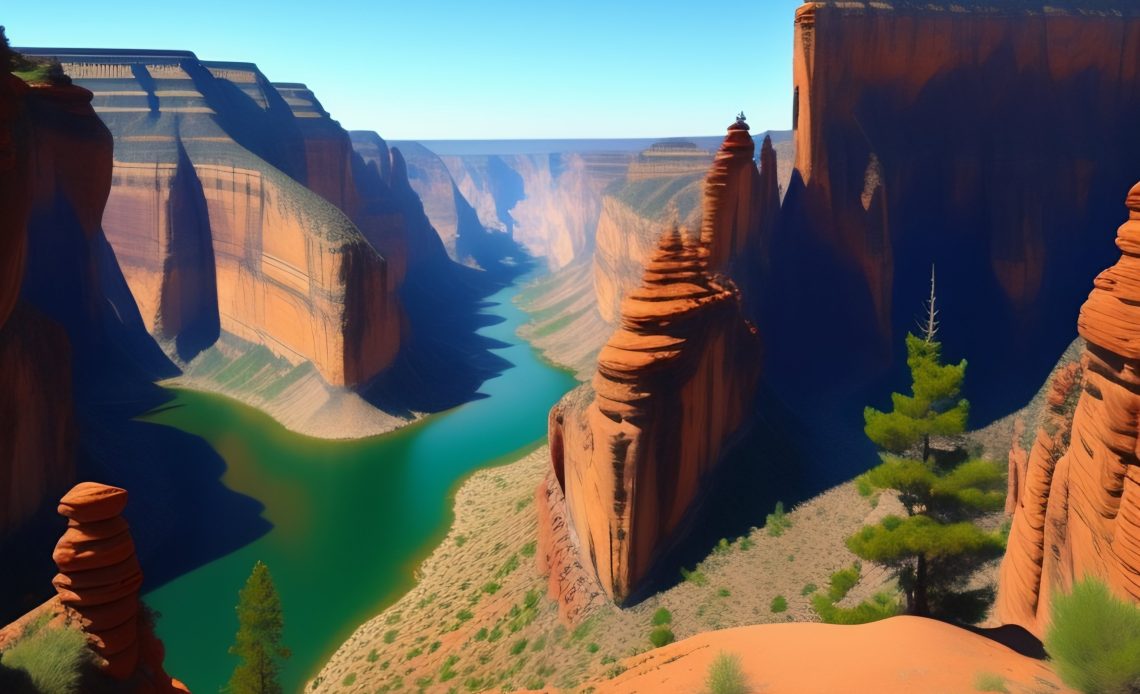Nestled in the heart of southwestern Utah, Zion National Park stands as a testament to the raw beauty and grandeur of nature. With it’s towering sandstone cliffs, lush canyons and vibrant flora and fauna, Zion is a must-visit destination for outdoor enthusiasts, hikers and photographers alike. The purpose of this article is that, we’ll get into the wonders of Zion National Park, uncovering it’s geological marvels, diverse wildlife and the best ways to make the most of your visit.
Zion National Park: A Natural Masterpiece
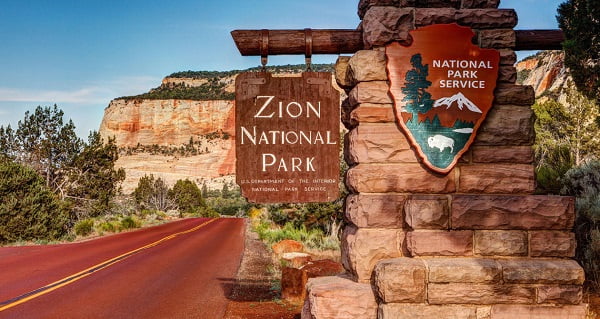
Zion National Park, located in the heart of Utah’s striking red rock country, is an unparalleled natural masterpiece. It’s iconic sandstone cliffs, sculpted over eons by the meandering Virgin River, stand as towering sentinels of geological wonder. Within this sanctuary, visitors are enveloped by a landscape that seamlessly marries rugged canyons, lush oases and thriving ecosystems. The park’s rich tapestry of hiking trails, ranging from gentle strolls to daring ascents, provides an intimate connection to nature, while it’s vibrant wildlife, including bighorn sheep and desert flora, adds a sense of wild enchantment. Zion National Park beckons all who enter to discover the ancient artistry of Earth, where time itself has etched an indelible masterpiece.
The Geology of Zion
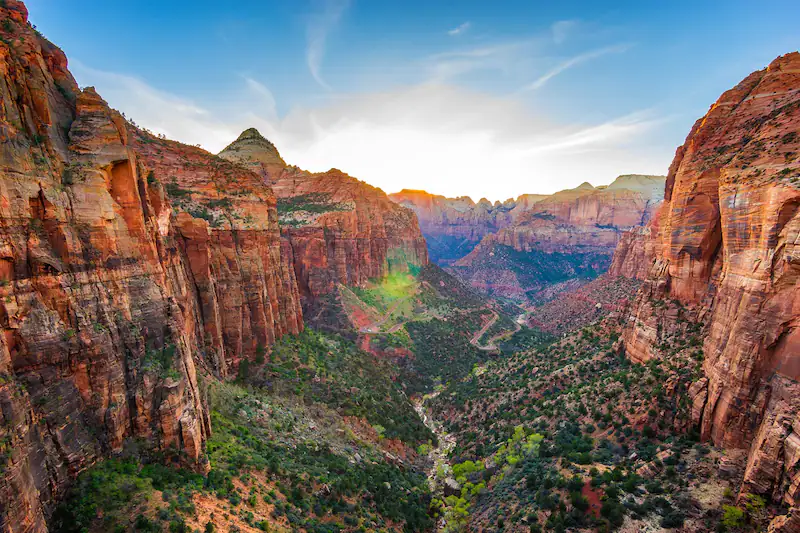
The geology of Zion National Park is an awe-inspiring testament to the forces of nature. Over millions of years, the Virgin River has meticulously sculpted towering sandstone cliffs, forming a mesmerizing landscape of sheer canyons, narrow slot canyons and majestic mesas. These stunning formations reveal the enduring power of water, wind and time, as they continue to shape and redefine the park’s dramatic terrain. Each layer of rock tells a story of geological evolution, from the ancient seabed deposits to the vibrant hues of iron oxide-rich sandstone, creating a living museum of Earth’s remarkable history etched into the heart of southwestern Utah.
Exploring Zion’s Trails
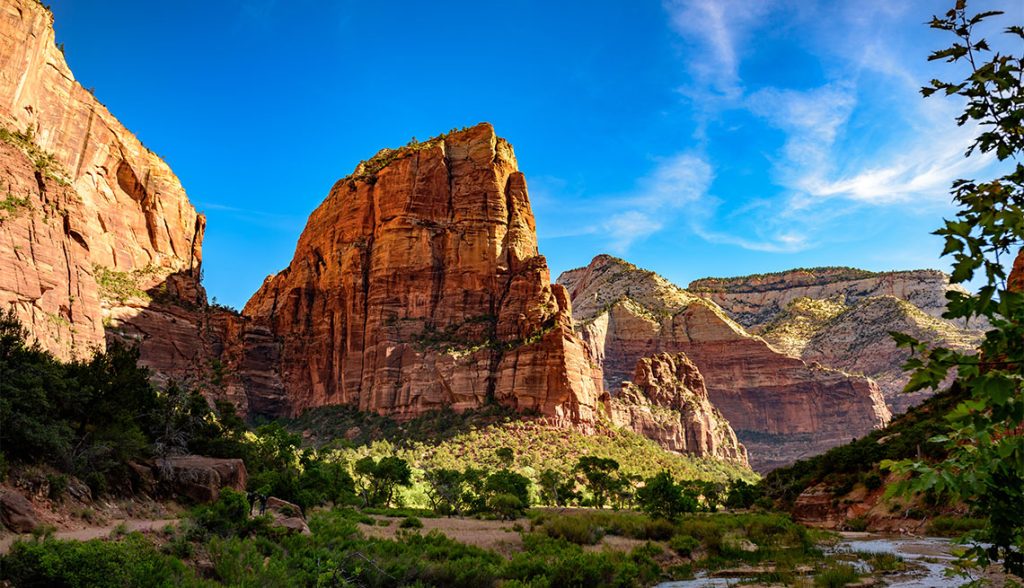
For hikers, Zion National Park is a paradise with a diverse range of trails suitable for all skill levels. Whether you’re a beginner or an experienced hiker, there’s a trail for you. Some popular options include:
- Angels Landing: This challenging trail rewards hikers with breathtaking panoramic views of the park. It’s not for the faint of heart, with steep drop-offs and narrow paths, but the experience is unparalleled.
- The Narrows: For a unique adventure, wade through the Virgin River in the narrowest section of Zion Canyon. The towering walls and cool waters make for an unforgettable hike.
- Emerald Pools: A family-friendly hike that leads to stunning emerald-colored pools nestled beneath waterfalls. It’s a great option for those with children or looking for a less strenuous hike.
Wildlife Encounters
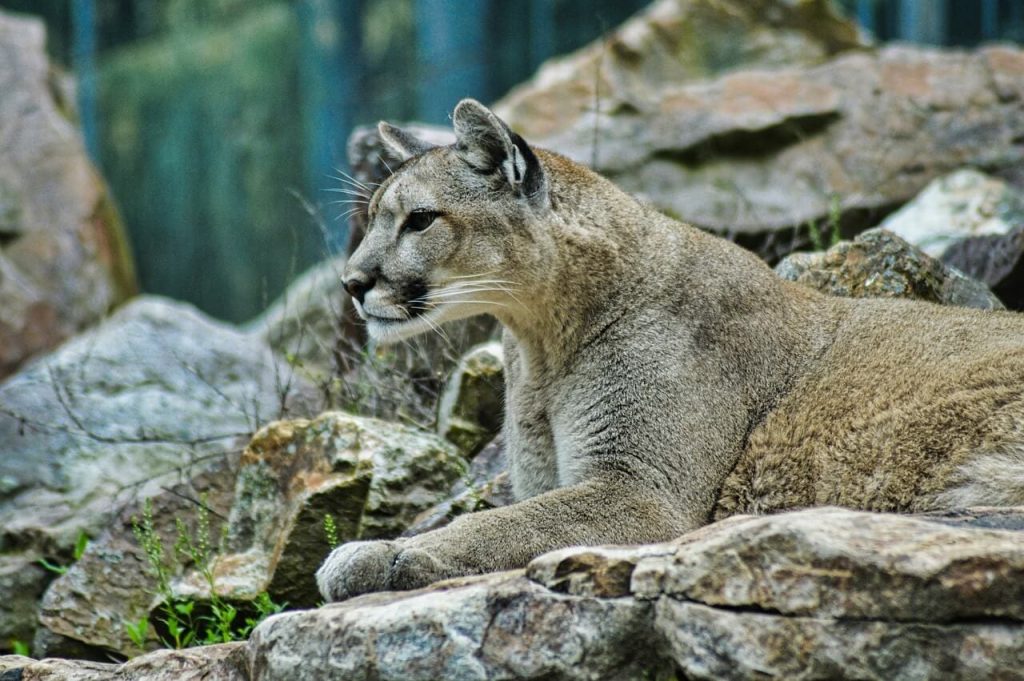
Wildlife encounters in Zion National Park offer a captivating glimpse into the natural rhythms of the desert southwest. Amidst the awe-inspiring red rock landscapes, visitors may encounter mule deer gracefully grazing in meadows, bighorn sheep navigating steep cliffs with unparalleled agility and the occasional glimpse of a fox darting through the brush. Birdwatchers are treated to a symphony of avian life, with peregrine falcons and golden eagles soaring overhead and the melodious songs of canyon wrens echoing through the narrow canyons. As the sun casts it’s warm glow over the park, these moments of connection with the park’s diverse wildlife add a profound layer of enchantment to the Zion experience, reminding us of the rich biodiversity that thrives in this arid and rugged environment.
Seasonal Considerations
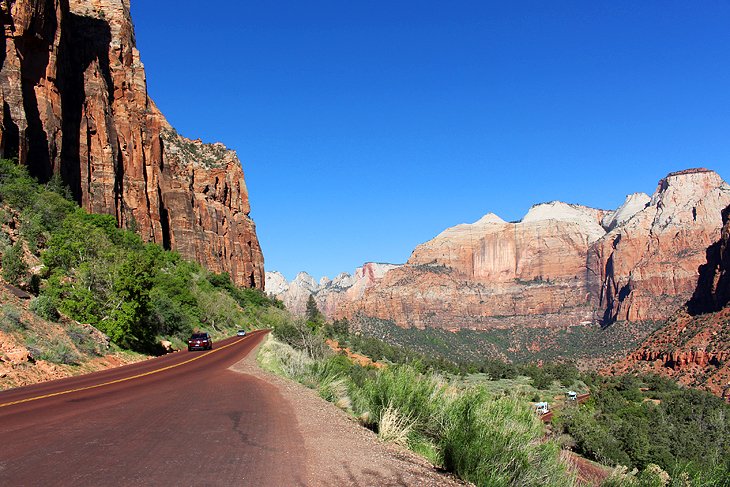
Wildlife encounters in Zion National Park offer a captivating glimpse into the natural rhythms of the desert southwest. Amidst the awe-inspiring red rock landscapes, visitors may encounter mule deer gracefully grazing in meadows, bighorn sheep navigating steep cliffs with unparalleled agility and the occasional glimpse of a fox darting through the brush. Birdwatchers are treated to a symphony of avian life, with peregrine falcons and golden eagles soaring overhead and the melodious songs of canyon wrens echoing through the narrow canyons. As the sun casts it’s warm glow over the park, these moments of connection with the park’s diverse wildlife add a profound layer of enchantment to the Zion experience, reminding us of the rich biodiversity that thrives in this arid and rugged environment.
Visitor Tips
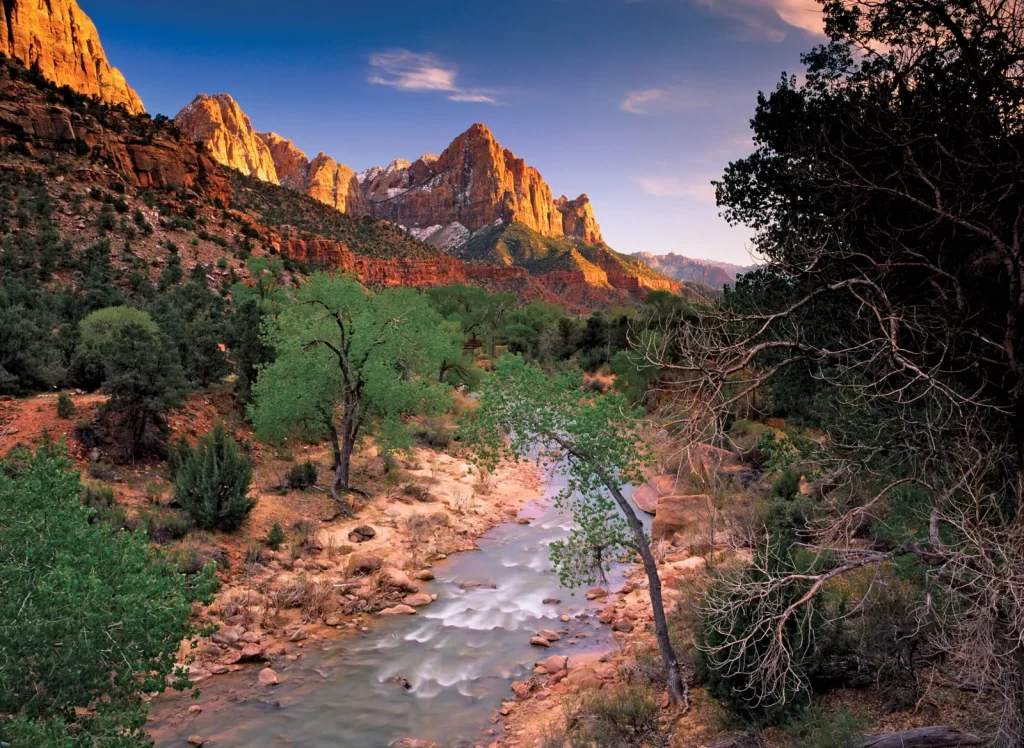
- Permits: Some hikes, like The Narrows, require permits. Check with the park’s official website for up-to-date permit information and reservations.
- Shuttle System: During peak seasons, the park operates a shuttle system to reduce traffic congestion. Be sure to plan accordingly and arrive early to secure a parking spot.
- Leave No Trace: Practice responsible outdoor ethics by leaving no trace of your visit. Pack out all trash, stay on designated trails and avoid disturbing wildlife.
- Lodging and Dining: Zion offers various lodging options, including campgrounds and nearby hotels. Dining options are available both inside and outside the park.
Zion National Park is a treasure trove of natural wonders and it’s essential to preserve it’s beauty for generations to come. As you plan your visit, remember to be mindful of the environment and fellow visitors to ensure that Zion remains an awe-inspiring destination for all.
Capturing the Beauty of Zion
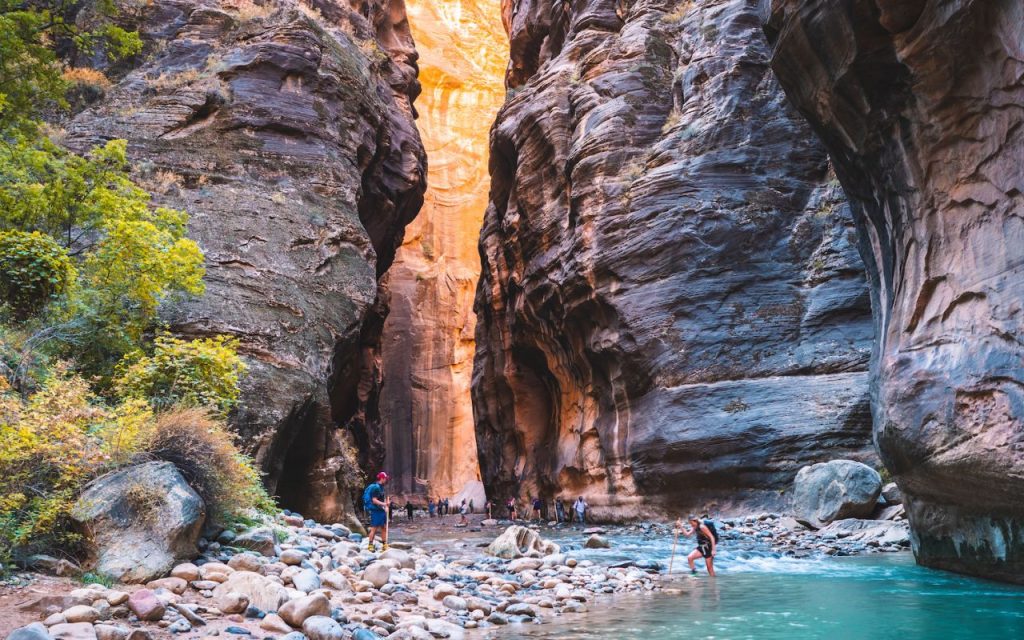
For photography enthusiasts, Zion National Park is a dream come true. The interplay of light and shadow on the towering red rock formations creates a constantly changing landscape, providing endless opportunities for stunning shots. Here are a few photography tips to help you make the most of your visit:
- Golden Hours: The soft, warm light during sunrise and sunset enhances the park’s beauty. Plan your hikes or photography sessions during these times to capture the magic.
- Use a Tripod: To achieve long-exposure shots of the Virgin River or capture the starry night sky, a tripod is essential for stability.
- Varied Lenses: Bring a variety of lenses to capture the expansive vistas and intimate details of the park’s flora and fauna.
- Wildlife Photography: Patience is key when photographing wildlife. Keep a respectful distance and use telephoto lenses to capture animals in their natural habitat.
Cultural and Historical Sites
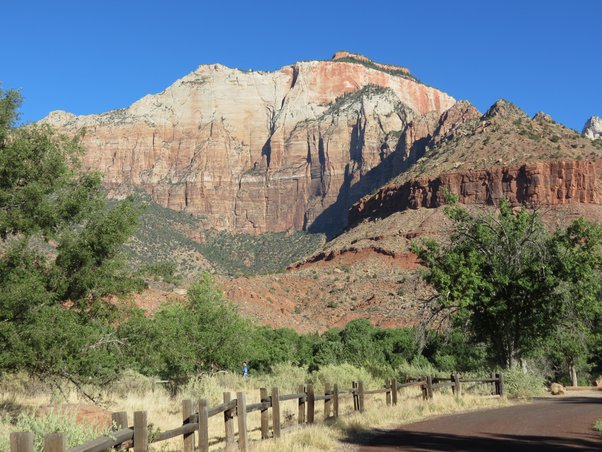
Beyond it’s natural beauty, Zion National Park also holds cultural and historical significance. The park’s name, “Zion,” is derived from the Hebrew word for a place of refuge or sanctuary. Native American tribes, including the Paiute and the Southern Paiute, have a deep connection to the land and you can learn about their history and culture at the park’s visitor center.
Additionally, early Mormon pioneers settled in the area and remnants of their homesteads can still be found within the park. The Zion Human History Museum offers valuable insights into the region’s human history, making it a must-visit for those interested in the cultural heritage of the park.
Conservation Efforts
Preserving the delicate balance of Zion National Park’s ecosystems is a top priority. The park’s management team and dedicated rangers work tirelessly to ensure it’s long-term sustainability. As visitors, you can contribute to conservation efforts by following Leave No Trace principles, staying on designated trails and respecting park regulations.
Supporting organizations dedicated to preserving the park, such as the Zion National Park Forever Project, can also make a positive impact. Your contributions can go towards projects that protect wildlife, maintain trails and enhance the overall visitor experience.
Trip Cost
| Type of Fee/Permit | Cost | Details |
|---|---|---|
| Private Vehicle Entry | $35 per vehicle | Valid for 7 consecutive days for one vehicle and it’s occupants. |
| Motorcycle Entry | $30 per motorcycle | Valid for 7 consecutive days for one motorcycle and it’s rider. |
| Per Person (Walk-in or Bicycle) | $20 per person | Valid for 7 consecutive days for pedestrians and bicyclists (16 years and older). |
| Zion Annual Pass | $80 per pass | Annual pass for unlimited entry to Zion National Park for one year from the date of purchase. |
| Interagency Annual Pass | $80 per pass | Provides access to federal recreation sites, including Zion National Park, for one year from the date of purchase. |
| Zion Wilderness Permit | Varies | Required for backcountry camping and certain hikes. Fees vary based on the specific hike and group size. Check with the park for details. |
| Commercial Tour Fees | Varies | Fees for commercial tour operators vary based on the size of the group and type of service provided. Operators should contact the park for pricing details. |
| Education Fee Waiver | Varies | Available for educational groups that meet specific criteria. Contact the park for eligibility and fee waiver details. |
FAQs
Yes, Zion operates a shuttle system during peak seasons to reduce traffic congestion. The shuttle provides access to various trailheads and scenic points. It’s an eco-friendly way to explore the park.
Hiking in Zion can be challenging, so it’s crucial to be prepared. Wear appropriate footwear, carry enough water and be mindful of weather conditions. For more strenuous hikes, like Angels Landing, use caution and follow park safety guidelines.
Yes, Zion offers both campgrounds and backcountry camping options. Campground reservations can fill up quickly, so it’s wise to book in advance. Backcountry camping requires a permit and adherence to Leave No Trace principles.
Zion is home to a variety of wildlife, including mule deer, bighorn sheep, foxes and a wide range of bird species. Keep a safe distance from animals and never feed them.
Yes, there are dining facilities within the park, including the Zion Lodge. However, options may be limited, especially during peak seasons. Consider bringing your food and snacks to ensure you have what you need.
In case of an emergency, call 911. Cell phone coverage can be limited in some areas of the park, so it’s essential to be prepared and carry essential supplies, such as a first-aid kit.
Conclusion
Zion National Park, Utah, is a place where the majesty of nature is on full display. From it’s towering cliffs to it’s hidden canyons, this park offers a unique opportunity to connect with the natural world. Whether you’re an avid hiker, a wildlife enthusiast or simply seeking a serene escape, Zion has something to offer everyone. Plan your visit, explore it’s wonders and leave with memories that will last a lifetime.

